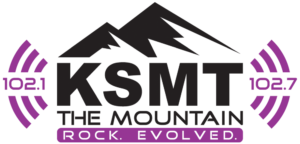STEAMBOAT SPRINGS — At 11 p.m., Robby Burns checks into his shift as a security officer at Steamboat Resort.
He’ll get off work at 7 a.m., go to sleep a half an hour later, then wake up in three hours to start training for the 2022 Beijing Olympics as an alpine snowboarder.
Burns spends two to three hours on snow, then eats before taking another three-hour nap before hitting the gym. He’ll rest before his shift, then repeat it all again the next day.
It’s not normal for an athlete of Burns’ caliber to work a full-time job and spend only eight hours on snow and 10 hours in the gym per week. Ideally, Burns would get eight hours of sleep, eat a well-balanced meal that isn’t microwaved rice or protein shakes and train 10 hours on snow and 15 hours in the gym every week. But when he fell just one spot short of the 2018 Olympics, that luxury was lost.
“I don’t want to give up on this because it’s hard right now,” Burns said. “I’m sleeping where I can sleep to make it to training; it’s a little bit of survival time. I’m making it work. It’s challenging but also beautiful. There’s not another thing on this earth I want to dedicate my time.”
Burns was the third-best American Alpine snowboarder, but the U.S. team only took two athletes. Knowing that he may not have the means to compete in Alpine snowboarding was not just a question of making it, but a question of the 28-year-old’s own identity.
Recommended Stories For You
“I spent five years creating this program to go to the Olympics and didn’t reach that goal,” Burns said. “I had to take some time for myself to re-evaluate — is snowboarding still my passion? When I took time away from snowboarding, it was great, but it was also like, this is my life. I don’t have any intention of walking away from snowboarding yet.”
Burns is originally from California but has been training with the Steamboat Springs Winter Sports Club for six years. He wanted to stay with his coach Thedo Remmelink, and to bring down the costs of training, the Winter Sports Club helped him find the security job and allowed him to coach snowboarding once a week.
“Before I even started looking, the most realistic thing is a night shift,” Burns said.
Tori Koski, the head of the SSWSC snowboarding program, found Burns the $14-an-hour security job and a roommate, Millie Bongiorno, who also trains in Alpine snowboarding.
With few sponsorships, Burns limits his travel. He won’t be making any World Cup appearances but hopes to compete in the World Championships in February. He won both the parallel and giant slalom at the SSWSC Race to the Cup and the parallel slalom at the Buck Hill Race to the Cup. Burns ranks second to Steamboat Springs’ own Cody Winters in the NorAm cup standings.
Remmelink believes Burns’ race in Steamboat was one of his best.
“It’s not easy, but it’s really fun,” Remmelink said. “At big events something can happen to anybody in the preparation. You can have an injury or a bad night of sleep. As an athlete you have to learn how to perform at a given time and a given place whether you’re ready or not.”
Burns is still young in the sport, having only 19 World Cup starts. More seasoned Alpine snowboarders are in their 30s with more than 100 World Cup starts.
“We’ve tried to give him a home where he can rebuild himself this year and then move forward in a strong way,” Remmelink said. “I think he can be in a very strong spot for the next Olympics.”
Not competing in World Cups puts Burns at a disadvantage for making the World Championships in Salt Lake City in February. To be a part of the A team, athletes must medal at a World Cup event. The B team requires two top-eight finishes at a World Cup event. He hopes he can hold onto his NorAm ranking and make his case.
“If the goal was to just be a part of the U.S. team, going to World Cups is the obvious choice,” Burns said. “In a four-year program, a lot more goes into it. Are you riding well enough to achieve a good time at the World Cup race?”
Funding a World Cup season is impossible for Burns right now. If it’s done right, the cost can average from $60,000 to $90,000 a year. Remmelink believes that training should be the focus, allowing Burns time to peak at the right times, and hopefully, that will be at races like the World Championships.
“In a competitive atmosphere, you measure yourself against somebody else and you hope to learn from that,” Remmelink said. “What we teach at the club is we also measure yourself against yourself and your own goals. Solid fundamentals play a huge role in peaking and that’s both on a technical level and on a mental level.”
While the training has lessened due to the demands of a full-time job, Burns believes that the strict schedule has allowed him to keep a focused mentality.
“It just really brought me to living in the moment,” Burns said.
“I’m not going to worry about what tomorrow brings. Before, I’d start stressing about a race two weeks out, three weeks out and that affects my ability to focus. In my current situation, I don’t have a ton of time to worry about what tomorrow’s going to bring. Race day comes up, and I’m like alright I’m tired, but now I have this.”
